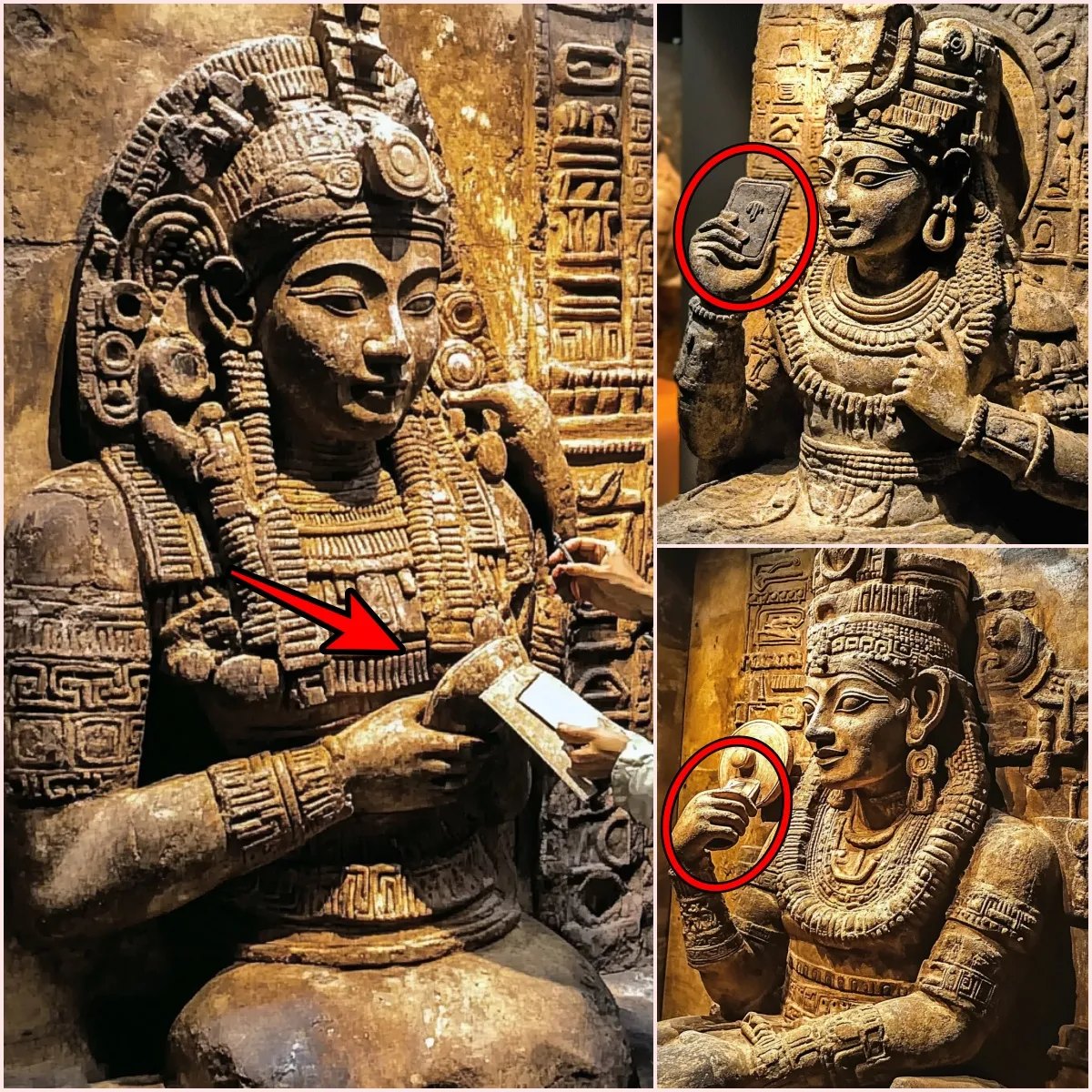A fascinating archaeological find in Central America is turning heads and challenging long-held beliefs about the technological capabilities of ancient civilizations. At a Maya temple site deep in the jungle, researchers recently uncovered a series of stone carvings estimated to be more than 2,000 years old. What makes this discovery so striking is that these ancient sculptures appear to depict figures holding objects that look uncannily similar to modern handheld devices—earning them the nickname “ancient phones.”

These carvings are part of a larger collection of temple reliefs showcasing gods, celestial events, and ritual scenes. However, several pieces stand out because the figures are shown grasping rectangular items with what seem to be intricate details—think buttons, screens, or even antennas. One sculpture in particular features a figure gazing intensely at the object in their hand, a posture remarkably similar to someone checking their smartphone today. This similarity has sparked widespread curiosity and debate among archaeologists, historians, and alternative theorists alike.
The site where these artifacts were found is believed to have been a ceremonial hub for the Maya civilization, which was known for its architectural brilliance, astronomical expertise, and rich cultural heritage. These newly discovered carvings only add another layer to the already complex narrative of the Maya. While many scholars approach the discovery with caution, some can’t help but wonder: did the Maya have tools far more advanced than we’ve ever imagined?
Mainstream archaeologists offer grounded explanations. According to many experts, the items depicted may represent ritualistic tools or ceremonial mirrors used during religious or astronomical practices. The Maya had a deep understanding of the stars and were meticulous record-keepers, often incorporating astronomy into their spiritual beliefs. From this perspective, the rectangular objects might symbolize instruments used to chart celestial events or communicate with the divine.
However, alternative theorists suggest bolder interpretations. Some believe these carvings hint at long-lost technology or even suggest ancient contact with extraterrestrial beings. The resemblance of the objects to modern phones has fueled theories that they could be “out-of-place artifacts”—items that don’t fit with the accepted historical timeline. Supporters of this idea often reference other enigmatic finds, like the Antikythera Mechanism from ancient Greece, as evidence that advanced tools may have existed far earlier than we thought.
Still, not everyone is convinced. Skeptics warn that the resemblance to smartphones may be purely coincidental and shaped by our modern perspective. They argue that it’s easy to project current technology onto ancient art due to our familiarity with these devices. After all, people often see what they want to see. To them, the “ancient phone” theory is more science fiction than science fact.
Regardless of interpretation, these carvings highlight the artistic and cultural sophistication of the Maya. They were master sculptors who used their craft not only to document their world but to express complex spiritual and intellectual ideas. The detailed workmanship seen in these reliefs serves as a testament to their incredible skill and symbolic storytelling. Whether the objects in the carvings were practical tools, sacred items, or metaphorical representations, their presence in such prominent artwork underscores their significance within Maya society.
What’s particularly compelling about this find is that it has reignited public interest in the Maya civilization. These people were far ahead of their time in many ways—building massive cities, developing a complex calendar system, and performing advanced astronomical calculations without the tools we rely on today. The “ancient phone” sculptures are yet another reminder of just how much we still don’t know about them.
As experts continue to analyze these mysterious carvings, more clues may emerge to help explain their purpose. For now, they remain an open-ended puzzle—one that stirs the imagination and challenges assumptions about the past. Whether they represent a forgotten technology, spiritual iconography, or an extraordinary artistic coincidence, these ancient artifacts continue to captivate and inspire.
Ultimately, these 2,000-year-old stone figures serve as more than just historical relics. They are bridges to a lost world—one that was remarkably sophisticated, deeply spiritual, and perhaps more advanced than we ever imagined. As the research continues, we may yet uncover more secrets hidden in the stone, waiting to be understood by a modern world still in awe of the past.





